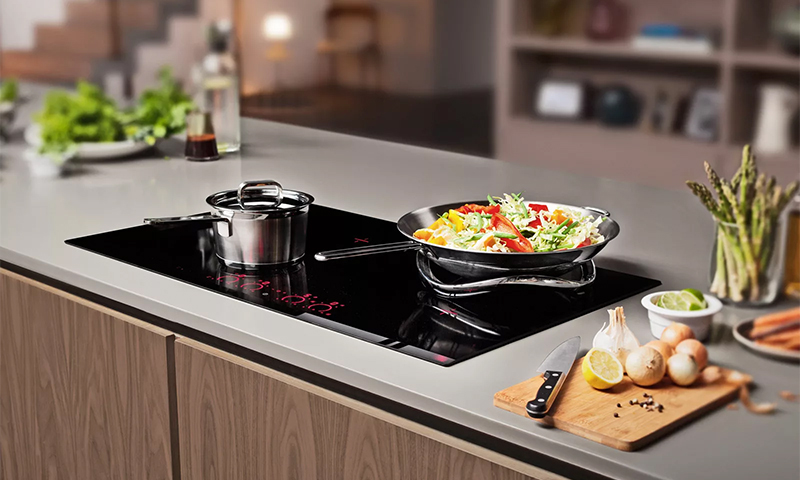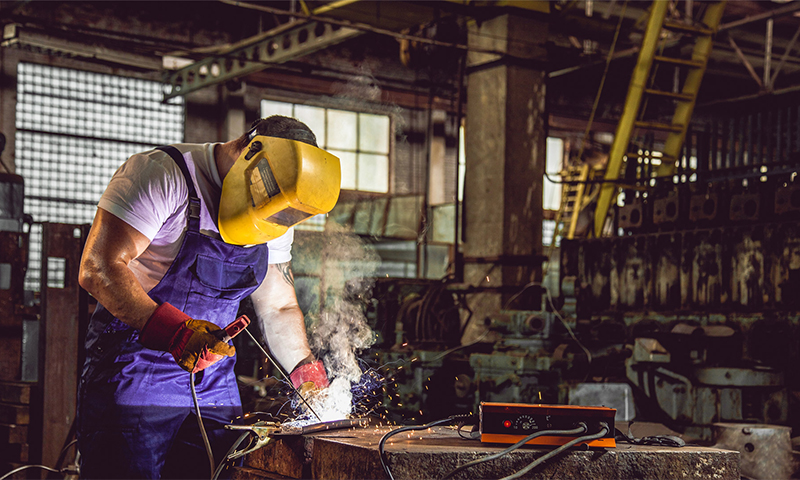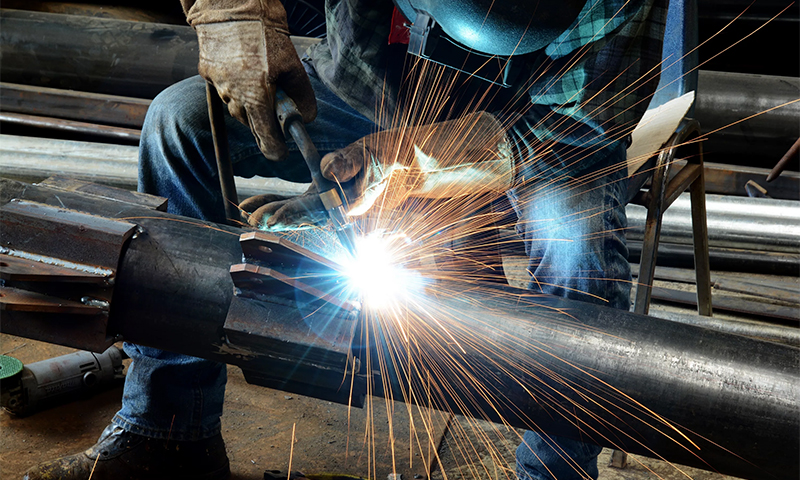Choosing a welding machine it is necessary to penetrate into its power, the corresponding consumable elements and the duty cycle. A large role is played by the required input power and the type of voltage produced. The quality of the welded joint and the ability to work with different metal thicknesses depend on the principle of operation of the device, whether it is a transformer, a semiautomatic device or an inverter.
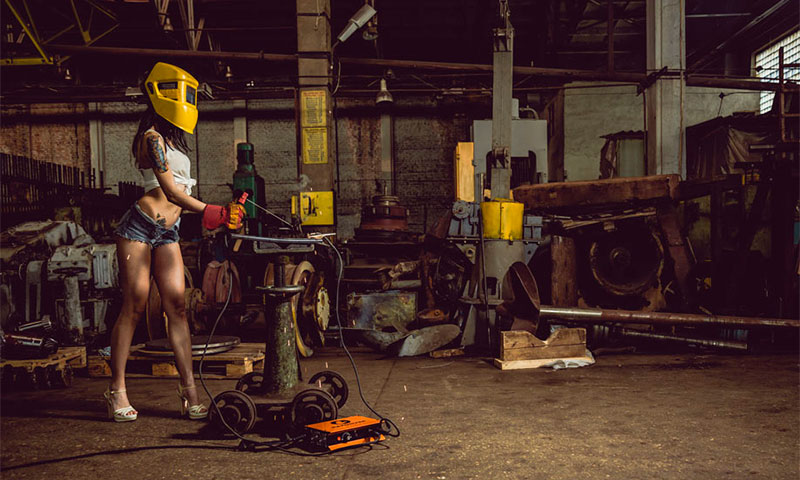
Content:
The best manufacturers of welding machines - which company to choose
If in everyday life a welding machine is needed from time to time, but there is no time to delve into all the differences and features, then you can choose high-quality products from proven manufacturers from the list below:
- Aurora;
- Fronius;
- Blueweld;
- Daewoo;
- Fubag.
Any of these devices will cope with tasks in the private house and the yard. But if you plan to engage in welding work at the semi-professional level or even full-time, then the capabilities of specific models in certain production conditions play a big role. Therefore, it is important to familiarize yourself with a detailed overview of common welding machines that will help you find "your".
The principle of operation and the device welding machine
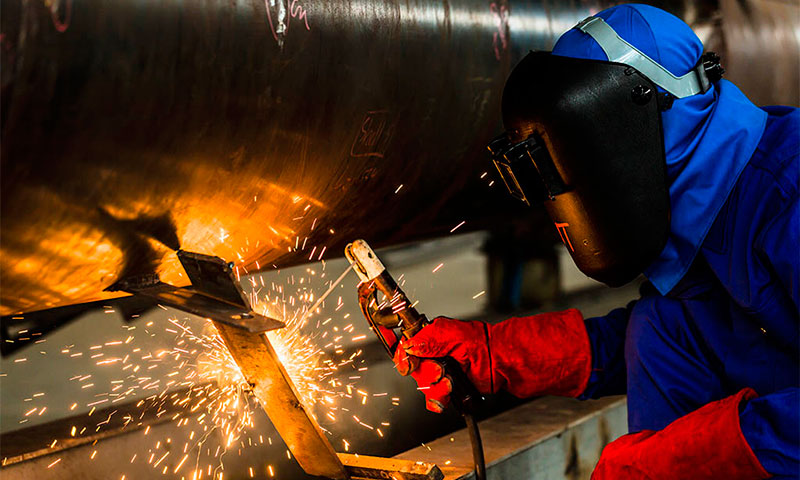
Welding equipment has many varieties, but most of the models combine the general principle of operation, which consists in heating and melting the electric current by the arc of the edges of the metal and the filler material, and creating a single crystal lattice in the patch seam.
To do this, connect the ground cable to the parts to be welded, denoted by "-". In the burner or holder there is a wire with the opposite value "+". Contact closure leads to the formation of an electric arc, whose temperature reaches 5000 degrees. This allows you to melt most types of metals.
To fully form the seam used consumables. These are coated electrodes or welding wire. Melting together with the main material, these steels are mixed, which gives strength and volume to the superimposed seam. Due to this, the connection is difficult to break, break or bend.
When a metal enters a liquid state, its molecules can interact with the surrounding air, which leads to the release of carbon and the formation of pores in the structure of the weld. Such a connection is not able to tightly hold water or gas pressure; poor performance on his break and refraction.
To prevent a chemical reaction using a protective environment in the form of a gas cloud. It is formed by a special coating of coated electrodes, which creates an impenetrable cloud layer that prevents the penetration of the atmosphere into the weld pool area. In the case of a semiautomatic device where the wire is fed without coating, this role is performed by a separate gas from a cylinder (carbon dioxide or a mixture with argon).
The process of creating a stable electric arc safe for the welder to hold in the hands of the welder is possible due to changes in the characteristics of the welding current occurring inside the apparatus.
The welding machine consists of the following elements:
- transformer with two windings;
- diode bridge;
- choke with capacitors;
- Control block;
- working elements (cable, holder).
The principle of operation is the passage of electricity through several stages. The input voltage falls on the primary winding. Due to the action of electromagnetic induction, the amperage (amperes) increase several hundred times, and the volts decrease to a safe value.
In the case of a conventional welding transformer, parts can already be connected at this stage. Inverters and semi-automatic devices, the modified current from the secondary coil goes through additional conversions to increase the frequency.
Types of welding machines
Despite the operation of the electrical network, welding devices have differences in the internal device and the technique of performing the work, which affects the quality of the seam and the applicability of the devices in certain conditions.
Transformers
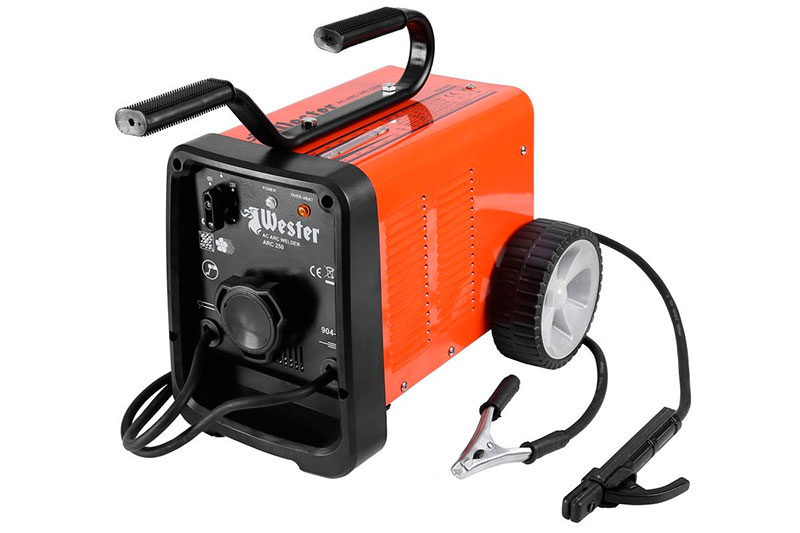
They represent the cheapest segment of the market for similar products. They have a very simple device and light weight (household versions). Industrial models differ in volumetric cases and decent weight. Suitable for welding carbon steel in all spatial positions.
It is better to use for simple metalwork, where the seams will not be subjected to increased load. With the help of a transformer you can weld doors, gates, water tank.
Advantages:
- affordable price;
- simple operation;
- easy repair;
- the ability to power on the household network;
- current adjustment.
Disadvantages:
- increased noise from work;
- poorly cooks alloy steel and cast iron;
- uncomfortable grip change current.
Inverters
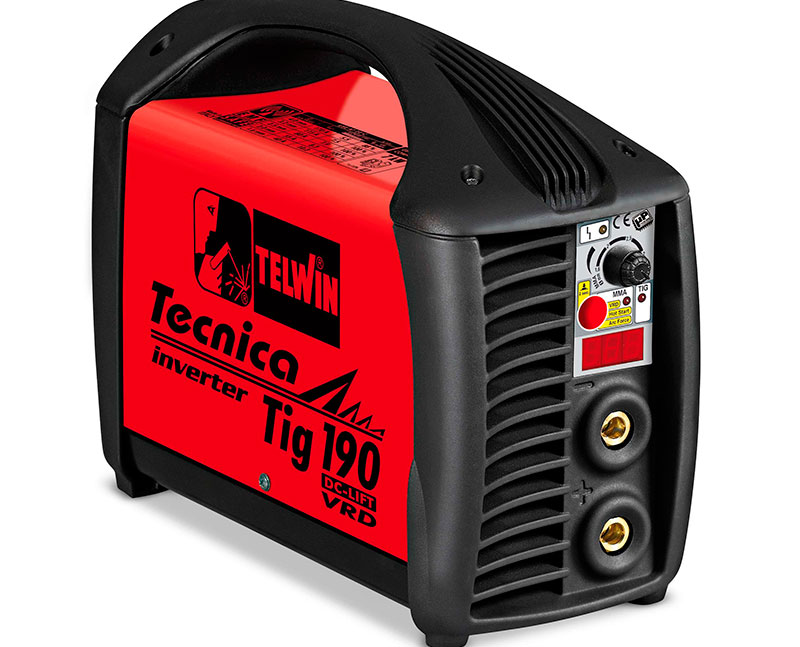
This is an advanced version of transformers with additional elements in the composition. In addition to the two windings, which play a key role in lowering the voltage (V) and increasing the power (A) of the current, the inverters have a diode bridge that rectifies the alternating current to DC without hesitation.
Then it goes down and goes to the filter from the capacitors and the choke to re-convert into alternating, but with an already increased frequency tenfold. This allows for smoother and stronger seams.
Inverters are good at welding not only sheet metal (fence, gate, tank), but also perfectly suited to the creation of plumbing and heating. Due to the high frequency they can weld alloy steel and cast iron. A small mass allows you to hang it on the shoulder by the belt and cook at height.
Advantages:
- very light;
- seams are smoother and stronger;
- high tightness of the connections;
- food from a household network;
- wide range of settings;
- many auxiliary functions for novice welders.
Disadvantages:
- cost more transformers;
- more elements in the electrical circuit that can fail;
- expensive repairs;
- Some models do not support all diameters of electrodes.
Semi-automatic
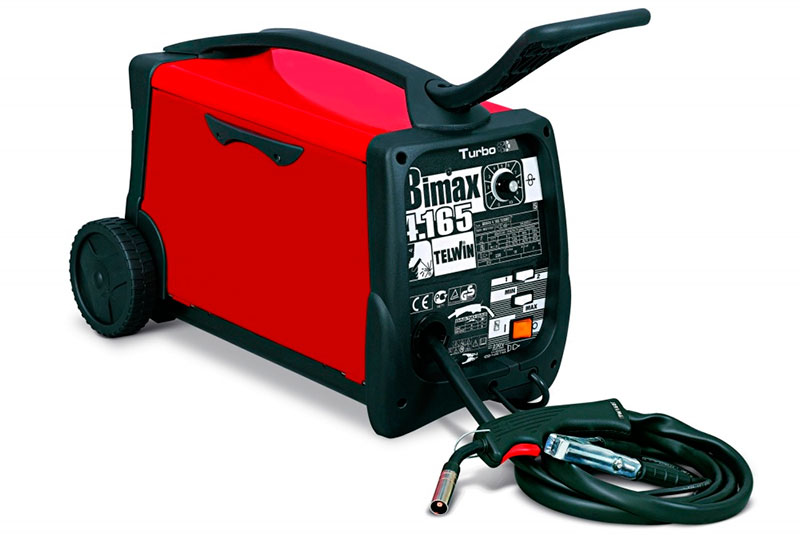
The third category of welding machines combines all the elements from the two previous ones: there is a transformer and a rectifying unit in the semiautomatic devices. But instead of using coated electrodes, wire feed from a coil drum is used.
This filler material is able to be supplied continuously, allowing a long weld to be conducted without stopping, which is convenient for long structures (fuel tanks, water filters, continuous welding of metal sheets).
The start of the supply is carried out by pressing the button on the burner, with which the protective gas is directed to the welding zone through another channel in the nozzle. Rotation of the drum and the delivery of the wire is due to the clamping roller mechanism and cable channel.
If you change the filler material to stainless wire, the apparatus is suitable not only for carbon steel. With an additive diameter of 0.8 mm, thin metal can be quickly welded onto car bodies.
Advantages:
- beautiful smooth seams;
- the ability to continuously weld;
- high performance;
- no slag on the surface interfering with the view during welding;
- quick post-treatment of seams;
- the ability to weld very thin sides.
Disadvantages:
- large dimensions of the device;
- require a gas cylinder and hose;
- the wire on the coils is more expensive electrodes.
Welding machine selection parameters
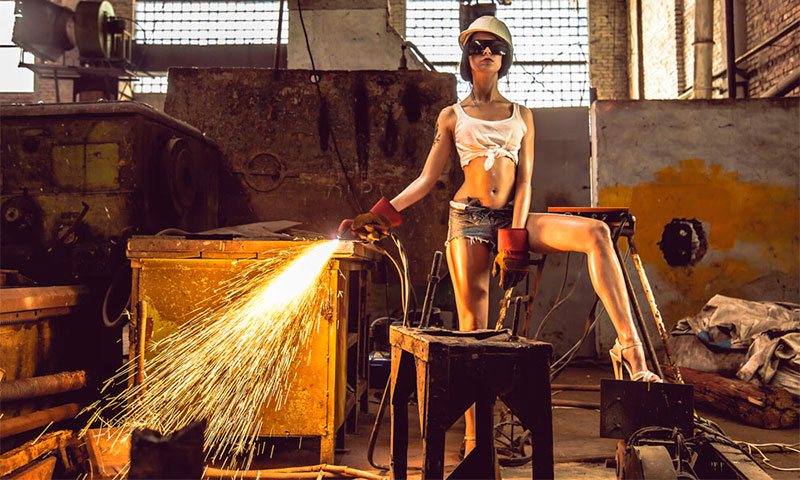
Choosing welding equipment, it is necessary to take into account the upcoming types of work and conditions on site. Knowing the basic parameters and their impact on the result, you can make a competent choice.
Choice by nutrition
To operate the welding machine, it must be connected to the network. There are models with 220 and 380V. Three-phase equipment can not be connected to a household outlet and it requires a special connector and cables of large section. Therefore, for welding at home (cottage, garage, apartment) model 220V is required.
Still worth considering the range of current consumption for normal operation. The parameters specified in the documentation 220-230V mean that the equipment can work well with a stable voltage in the network.
If there are frequent jumps in a big way, then the device may burn (without the protection installed). When the current drops in the network, the device will boil poorly (frequent defects in the form of penetration and electrode sticking to the surface). In this case, you will need devices with an extended input current range of 140-250V.
In industrial use, most shields are equipped with three phases, which allows you to connect powerful devices and weld steel 10-30 mm. But for this, it is necessary to ground them with a separate line to the circuit so that current breakdown does not lead to the death of the worker. In household versions, grounding is included in the structure of the outlet itself and the device plug.
Welding current range
This is a very important parameter on which the ability of an apparatus to weld metal of a certain thickness depends. It is measured in amperes and denoted by the letter A. The indicator has two values - the minimum and maximum, and both are important for different types of work.
In order to weld thick elements (channel, corner, rail), high values of 300-500 A are needed. This will allow not only stitching from the top, but also penetrating deep into the product.
In opposite cases, when working with thin iron is required (welding of sheets 0.8–1.0 mm to the fence, making containers from tin) the minimum values of current strength are important. Here devices from 20-30 A will be useful. If the threshold is 60-80 A, then welding will leave holes and additional resistance will be required to be installed to reduce the current.
Here the form of current adjustment is also important. If the body has a toggle switch with values of 30, 50, 70, 90, 120 A, then this will allow setting the force only approximately. It may be that 90 A is not enough for good penetration, and 110 A is already a lot. Smooth adjustment with digital display and change by one gives more precise settings.
Electrode Diameter
It is difficult for a non-specialist to look at the required metal strength by looking at the thickness of the metal, therefore an additional parameter is the diameter of the welding electrode, the work with which is supported by the equipment.
To cook thin car bodies, it is best to buy wire for a 0.8 mm semi-automatic machine or 1.6-2 mm coated electrodes. For welding of pipes, 3 mm is best suited, and in the case of manufacturing gates and fences, it is worth buying an apparatus with an indicator of electrode diameters up to 4-5 mm.
No-load voltage
This is not a power supply voltage, but an indicator of the current at the time when the equipment is turned on, but the arc is not lit. This parameter indicates how easy it is to ignite the electrode.
The values of 35-60 V should be chosen only by experienced welders, since a trained hand and the ability to withstand the gap between the end of the electrode and the metal surface of 3-5 mm are needed.
Beginner welders should look for models with a no-load value of 70-90 V, which will allow not to knock for a long time at the place of joining, but to immediately start the arc and start welding.
When the contact is set, the voltage is automatically lowered to 12 V in order to secure the worker's touch on the parts being welded.
Duty cycle
This is an indicator of the temporary use of equipment at maximum welding mode. For example, a value of 60% indicates that out of ten minutes of work at the highest ampere value, the device will be able to boil six minutes, and four it needs to be cooled.
If it is planned to use a device for welding doors, a fence, heating, where there is a lot of preparatory work as the case progresses, then the device will have time to rest and the cycle of 60% is quite enough. And not each of these processes requires welding at maximum power mode.
In the case of more professional activities with daily employment (production of safes, welding machines) or conducting work on a three-dimensional structure (large water tank), where there are long straight seams and you can work for a long time, it is better to purchase models with a cycle rate of 80-100% . The latter are generally designed for continuous activity during the entire time of inclusion.
Machine weight
This parameter is important for frequent shipments. When the main work is done not in the workshop or garage, but every time in a new place (creating heating for people, repair work on the water supply system), it is very inconvenient to carry a heavy machine of 10 kg.
During the day, it may need to be repeatedly moved, which takes additional forces. Therefore, for a mobile way of activity, lightweight models of 3-5 kg are needed, and any device by weight will be suitable for stationary work.
But the mass of the apparatus is important in the types of work in spatial position. If the weld involves the creation of a connection at a height (supports, balconies, large greenhouses, awnings), then often the welder has to lift the equipment with him. Lightweight models in 2-3 kg, worn on the shoulder through the belt, greatly simplify the implementation of such tasks.
Maximum power of the device
This parameter is denoted by kW and can vary from 2.5 to 10. These values are necessary when working in homes with old wiring and meters that may not be designed for high loads and traffic jams will constantly knock out. This will not allow welding and the unit will be useless.
In this case, we need devices with a minimum of 2.5-3.5 kW. For industrial conditions or new wiring and modern counters designed for air conditioners, washing machines and irons, you can use more powerful devices.
But this parameter implies a value at maximum operation. For example, a value of 300 A on the scale. If most types of work in the house with the old wiring and the meter is required to perform 200 A, then problems should arise.
Cable length and cross section
Usually, 1.5-1.8 m cables for holder and weight are supplied with store devices. This is enough to cook on the desktop in the garage or to connect products on the floor. Such equipment is convenient to collect small containers and carry out repairs. But to make a door or gate would be inconvenient due to the dimensions of the structure.
Most doors are at least 1900 mm in length, which will require a permutation of the apparatus for welding all corners. When working on the greenhouse, which are 2.5 m in height, the welding equipment will have to be raised to an additional rack. Therefore, it is better to buy a cable with a length of 3 m and more.
But when you increase the path for the current is worth remembering about the cross section of the wires. For cables from 3 to 5 meters, a cable diameter with a winding of at least 10 mm is required. This will not overheat and melt the wire.
It is also worthwhile to increase the strength of the welding current on a long cable in order to overcome the increased resistance from the section, so the device, which you plan to work around large products or at height, should have a margin of this size.
Type of current
In welding machines, there are several types of stress for the overlay seam.
Transformers are boiled with alternating current, which is suitable for simple structures without increased loads (greenhouse, doors, fence).
Inverters operate using alternating current, but increased frequency, which makes them practical when welding pipes and tanks.
Devices with direct current provide greater freedom for the types of metals being welded and interact well with stainless steels (towel warmers, tanks, SUV bumpers).This value is indicated in the device characteristics by a straight or wavy line, which implies a constant or alternating voltage.
Extra options
1. The arcforcing technology will be convenient for novice welders because it prevents the electrode from sticking when its end fails to approach the product. When the hand is not trained to shutter speeds of 3-5 mm, the end of the consumable material often sticks, which spoils the seam and slows down the whole process. Forcing allows the device to independently increase the amperage by 1-2 s to prevent sticking and to continue welding at the set mode.
2. The hot start feature helps to easily energize the arc. For this, it is necessary to tap the end of the electrode on the beginning of the parts to be welded or an additional draft plate. Repulsing coatings from impacts complicates combustion and reduces the security of the weld pool. During a “hot start”, an increased voltage is applied to the electrode at the time of ignition, which facilitates the ignition of the arc.
3. The overheat protection will automatically turn off the device and signal it with a burning light bulb, which will prevent the transformer or the diode bridge from burning. This helps to prevent unscheduled repairs of equipment, when he became very interested in work, and does not need to periodically check the temperature of the device with his hands.
Which welding machine to choose
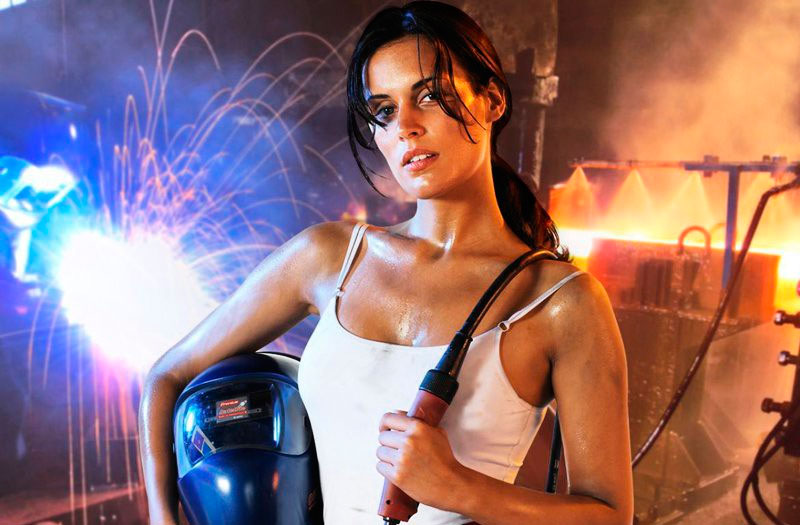
1. For welding pipes for heating and water, it is desirable to have an inverter with a current range of 20-200 A, 1.8 m cables, power supply 140-250 V, weight 3 kg and a cycle of 60%.
2. To repair cars where welding on a thick frame and a thin body is necessary, a semi-automatic machine with the possibility of setting a wire of 0.8-1.2 mm, 20-300 A, cable channel of 3 m, and power supply 180-250 V will be optimal. Cyclicity 80-100% will do. The mass of the device may be 6 kg or more, but this is not important in view of placing the body on a trolley with protective gas and moving it on wheels. For large enterprises, it makes sense to have a three-phase model at 380 V.
3. For welding doors, a fence and a gate, a simple transformer of 40-250 A is enough, with a cable of 2 m, and a cycle of 60%. Power depends on the local network and may be 220-230 V. If the meter in the house is old, then it is better to find a non-powerful 3.5-4 kW model.
4. To work at heights (welding greenhouses, supports, sheds, balconies), a lightweight inverter of 2-3 kg is needed, with a 1.8 meter cable and belt fastening. The current can be 30-180 A, since the profile has a metal wall thickness of not more than 2 mm.
5. Furnace boilers and various heat exchangers require deep penetration due to the thick walls. Here you need a powerful inverter for 300-500 A with cycles of 80-100% and 7.5 kW. It should support the work of electrodes 5-6 mm in diameter. Possible three-phase washing.
How much does a welding machine cost?

1. For pipes it is worth buying an inverter for 5000-12000 rubles. It all depends on the availability of additional functions.
2. Semiautomatic machines for auto repair will cost 16500-160000, where the country of origin, power and various control units (electronic or mechanical) play a big role.
3. In order to manufacture doors and gates or repair an enclosure, a transformer will cost from 3,700–4,500 rubles.
4. For easy work at height you need a compact inverter with a price of between 3500-5000 rubles.
5. A powerful model of an inverter for thick metal for boiler steel will cost 17000-40000 rubles.
It will be interesting to friends too

